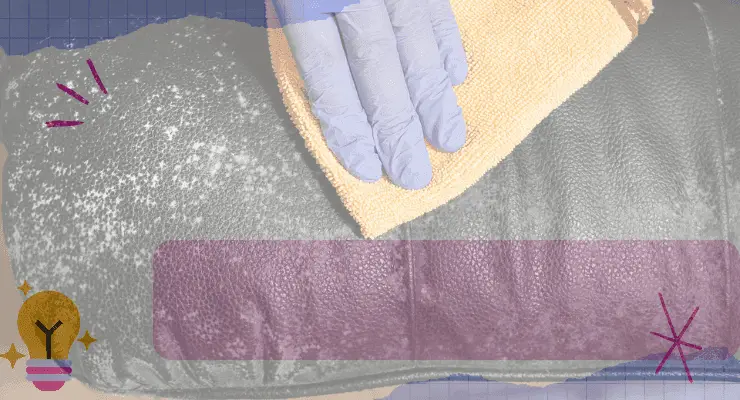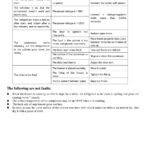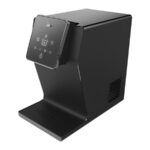Mold on a couch looks like green, black, or white fuzzy spots. It often appears in clusters and emits a musty odor.
Mold on your couch is more than just an eyesore. It poses health risks and can damage the fabric. Mold thrives in damp, dark environments, making your couch a potential hotspot. Regular cleaning and ventilation are essential to prevent mold growth.
Spotting mold early can save you from costly repairs or replacements. Always check hidden areas like under cushions and along seams. Using a dehumidifier can help reduce moisture in your home. If mold appears, use a mixture of water and white vinegar to clean it. Professional cleaning services are also an option for severe cases.

Identifying Mold Growth
Mold on a couch can be a serious issue. Identifying mold early helps prevent health problems and furniture damage. Here’s how to spot mold growth on your couch.
Common Signs
- Musty Odor: A strange, musty smell often signals mold.
- Discoloration: Look for green, black, or white spots on fabric.
- Allergic Reactions: Sneezing or itchy eyes may occur near the couch.
- Surface Texture: Mold feels slimy or fuzzy to the touch.
Different Types
| Type of Mold | Appearance |
|---|---|
| Aspergillus | Usually black or green, forms thick patches. |
| Penicillium | Blue or green, often powdery. |
| Cladosporium | Black or olive green, appears on fabric and wood. |
| Stachybotrys | Black, slimy, and toxic. |
Early Stages Of Mold
Noticing mold early can save your couch. Mold grows quickly and can cause health problems. Learn how to spot mold in its early stages.
Initial Appearance
In the early stages, mold appears as small, white or green spots. These spots may look like tiny, fuzzy dots. Pay attention to discoloration on the fabric. It may look like a slight stain or smudge. Use a flashlight to inspect dark corners and crevices.
Surface Changes
Mold can cause the surface of your couch to change. You might feel a slimy or sticky texture. The fabric may also feel damp or wet. Check for musty or earthy odors. These are clear signs of mold growth. Look under cushions and along seams. Mold often hides in these areas.
Advanced Mold Infestation
Advanced mold infestation on a couch can be a serious problem. It often indicates that the mold has deeply penetrated the fabric and structure. This level of infestation can cause health issues and damage to your furniture. Understanding the signs of advanced mold infestation is crucial for effective remediation.
Deep Penetration
When mold reaches an advanced stage, it penetrates deeply into the couch. The mold spores infiltrate the fabric and cushion layers. This makes it hard to remove with simple cleaning methods.
You might notice a musty odor emanating from the couch. This smell persists even after surface cleaning. The mold also weakens the internal structure of the couch. Over time, this can cause the couch to lose its shape and firmness.
Color Variations
Advanced mold infestation often leads to visible color variations on the couch. The mold appears in different shades. These include black, green, white, and even orange hues.
These color changes are usually irregular patches. They might start small but can spread rapidly. The color variations are a clear sign of deep-seated mold growth. Immediate action is necessary to prevent further spread.
Here’s a table that summarizes the key indicators of advanced mold infestation:
| Indicators | Description |
|---|---|
| Deep Penetration | Mold spores infiltrate fabric and cushion layers |
| Musty Odor | Persistent smell that doesn’t go away with cleaning |
| Color Variations | Irregular patches in black, green, white, or orange |
To address advanced mold infestation, consult a professional. They have the tools and expertise to handle severe cases.
Mold On Different Materials
Mold can grow on various couch materials. It’s important to identify mold early. Mold appears differently on each material. Knowing these differences helps in cleaning and prevention.
Fabric Surfaces
Fabric couches are common in many homes. Mold on fabric looks like dark spots. These spots can be green, black, or white. Mold grows quickly on fabric. It thrives in damp environments.
Signs of mold on fabric:
- Dark or discolored patches
- Musty smell
- Soft or damp areas
Preventing mold on fabric:
- Keep the room dry
- Use a dehumidifier
- Clean spills immediately
Leather Upholstery
Leather couches are elegant but can mold too. Mold on leather appears as fuzzy or powdery spots. These spots can be white, green, or black. Leather requires special care to remove mold.
Signs of mold on leather:
- Fuzzy or powdery spots
- Stains that don’t wipe off
- Unpleasant odor
Preventing mold on leather:
- Keep leather dry
- Use leather conditioner
- Clean regularly with a soft cloth
Health Implications
Discovering mold on your couch can cause various health problems. Mold exposure can impact your well-being in several ways. It’s crucial to recognize the signs and take action.
Allergy Symptoms
Mold spores can trigger allergic reactions. Common symptoms include:
- Sneezing
- Runny or stuffy nose
- Itchy eyes
- Red or watery eyes
- Skin rashes
Allergy symptoms can vary from person to person. If you notice these signs, your couch might be the culprit.
Respiratory Issues
Mold can cause serious respiratory problems. Breathing in mold spores can lead to:
- Chronic coughing
- Wheezing
- Shortness of breath
- Asthma attacks
People with pre-existing conditions are at higher risk. Even healthy individuals can experience respiratory issues. It’s important to keep your home mold-free.
| Symptom | Description |
|---|---|
| Sneezing | Frequent, uncontrollable sneezing |
| Runny Nose | Constant nasal discharge |
| Itchy Eyes | Persistent eye irritation |
| Coughing | Chronic coughing fits |
| Wheezing | Whistling sound when breathing |
Preventing Mold Growth
Preventing mold growth on your couch is crucial for maintaining a healthy home. Mold can cause health issues and damage your furniture. Let’s explore how to keep mold away by managing humidity and keeping your couch clean.
Humidity Control
Controlling humidity is key to preventing mold. Mold thrives in moist environments. Here are some tips to control humidity:
- Use a dehumidifier to reduce moisture in the air.
- Ensure proper ventilation by opening windows and using fans.
- Keep indoor plants to a minimum, as they can increase humidity.
- Fix leaks promptly to prevent water from seeping into your couch.
Cleaning Tips
Regular cleaning helps keep mold at bay. Follow these tips to maintain a mold-free couch:
- Vacuum your couch weekly to remove dust and debris.
- Wipe down surfaces with a damp cloth and mild detergent.
- Avoid using too much water when cleaning, as excess moisture can promote mold growth.
- Dry your couch thoroughly after cleaning to eliminate any moisture.
- Use protective covers to shield your couch from spills and stains.
By controlling humidity and keeping your couch clean, you can prevent mold growth effectively. A mold-free couch means a healthier and more comfortable home.
Mold Removal Techniques
Removing mold from a couch is essential for a healthy home. Mold can cause health issues and damage furniture. There are various techniques to remove mold. Let’s explore some effective methods.
Natural Remedies
Using natural remedies can be safe and effective. Here’s a list of natural solutions:
- White Vinegar: Spray white vinegar on the moldy area. Let it sit for an hour. Wipe it clean with a damp cloth.
- Baking Soda: Mix one tablespoon of baking soda with water. Spray it on the mold. Scrub with a brush and wipe clean.
- Tea Tree Oil: Add one teaspoon of tea tree oil to a cup of water. Spray the mixture on the mold. Let it dry without rinsing.
- Hydrogen Peroxide: Use a 3% hydrogen peroxide solution. Spray it on the mold. Leave it for 10 minutes. Wipe it clean.
Chemical Solutions
Sometimes, natural remedies might not be enough. Chemical solutions can be more potent. Here are some options:
- Bleach: Mix one cup of bleach with a gallon of water. Apply it to the moldy area. Let it sit for 15 minutes. Rinse and dry.
- Ammonia: Use clear ammonia (not colored). Mix equal parts of ammonia and water. Spray it on the mold. Wait for a few hours. Wipe it clean.
- Commercial Mold Cleaners: There are many store-bought mold cleaners. Follow the instructions on the label for the best results.
Use these methods to keep your couch mold-free. Always wear gloves and a mask when cleaning mold. Ensure proper ventilation to avoid inhaling mold spores.
When To Call A Professional
Discovering mold on your couch can be alarming. Identifying the right time to call a professional is crucial. This section will guide you through severe mold cases and professional services.
Severe Cases
Severe mold cases require immediate attention. Here are some signs:
- Extensive mold coverage
- Strong, musty odor
- Discoloration spreading rapidly
- Family members experiencing allergies
Mold can spread quickly and affect air quality. If these signs are present, professional help is necessary.
Professional Services
Professional services offer thorough mold removal. Here’s what they provide:
| Service | Description |
|---|---|
| Inspection | Experts assess the extent of mold growth. |
| Cleaning | They use specialized equipment to clean mold. |
| Prevention | Professionals apply treatments to prevent future mold. |
Choosing professional services ensures thorough and safe mold removal. Protect your home and family by seeking expert help in severe cases.
Frequently Asked Questions
How Do I Know If My Couch Has Mold?
Check for musty odors, visible black, green, or white spots, and increased allergy symptoms. Inspect hidden areas closely.
Can A Moldy Couch Be Saved?
Yes, a moldy couch can be saved. Clean it with a vinegar-water solution. Dry it thoroughly to prevent mold return.
Can You Remove Mold From A Couch?
Yes, you can remove mold from a couch. Use a mixture of water and vinegar. Scrub gently, then dry thoroughly.
Can A Moldy Couch Make You Sick?
Yes, a moldy couch can make you sick. Mold releases spores that trigger allergies and respiratory issues. Prolonged exposure may lead to more severe health problems.
What Are Signs Of Mold On A Couch?
Mold appears as black, green, or white spots. It often has a musty odor.
Conclusion
Recognizing mold on a couch is crucial for maintaining a healthy home. Look for discoloration, musty smells, and fuzzy patches. Regular cleaning and proper ventilation can prevent mold growth. Addressing mold early ensures a longer lifespan for your furniture and a safer living environment.
Keep your home mold-free for better health.




